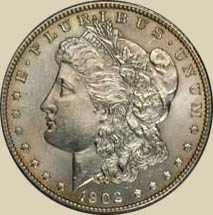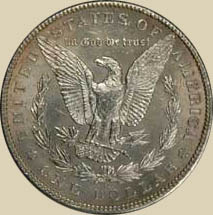Page |
 |
What You Need to Know:
|
 |
![[Click for larger version]](matting/ScreenCap21.jpg)
Summary:
I describe and illustrate a basic procedure for using Photoshop to create an eye-pleasing composite image of a coin's obverse and reverse from images captured by a digital camera. The techniques described in this article can be adapted to most standard image editors by users with a minimal level of experience.
Introduction:
Many beginning coin photographers struggle for many hours, days, or weeks before they are able to capture a coin photo they're satisfied with. Once that photo has been captured, they soon realize that they face a new problem: how to share it with their friends. A common way to display images today is by posting them on a coin message board. But how to format the photo so that it's easy on the eyes?
Simply cropping the image will yield quick-and-dirty results. Images like that show up regularly, but they're not going to impress anyone with their beauty. By simply mastering a few quick and easy image editing techniques, the coin photographer can present their new images in an attractive manner to anyone online.
The myriad of image editing tools in a popular editor such as Photoshop can be confusing to the novice, but for the purposes outlined above, a few simple tricks and methods can be easily learned and will yield great results. Below, I demonstrate a common task for the coin photographer: take two raw images (obverse and reverse) of a coin and place them side-by-side on a black background for posting on a website.
I have included sample screen captures along side my instructions as another aid to the reader. To view them, simply click on the image, then click your browser's "back" button to return to the commentary.
Notes:
Before I begin, I'd like to familiarize readers with a few basics that will make navigating through the image editor a little more understandable.
I sometimes refer to key combinations such as CTRL+A. This simply means "hold down 'CTRL' (control) and press the 'A' key."
I will regularly refer to menus (e.g. FILE or EDIT) and submenus (e.g. FILE >> NEW or IMAGE >> CROP).
I am assuming a basic understanding on the part of the reader of how to navigate through folders on the hard drive.
Procedure:
Footnotes:
* At several points in the instructions, I suggest saving your file in Photoshop's proprietary format: ( filename.PSD ). Saving your file as a jpeg (filename.JPG) image can result in a loss of resolution, because JPG format compresses your image to conserve hard drive space. Saving in PSD format until you're ready to 'publish' your photo online enables you to preserve the most image quality prior to putting your image up online.
** Don't like your coin against a black background? Experiment with different colors once you've learned the techniques I discuss! Advanced users can also include a copy of a coin's slab certificate or insert their name or notes in the coin image. Once you've learned the basics, play with the software a little and see what you can do with it.
Copyright Notice:
This article is copyright (c) 2006 by Michael C. Parrish. All rights reserved.
If you wish to duplicate this article, please contact Michael via email at: pendragon1998@yahoo.com.
![[Click for larger version]](matting/ScreenCap01t.jpg)
![[Click for larger version]](matting/ScreenCap02t.jpg)
![[Click for larger version]](matting/ScreenCap03t.jpg)
![[Click for larger version]](matting/ScreenCap04t.jpg)
![[Click for larger version]](matting/ScreenCap05t.jpg)
![[Click for larger version]](matting/ScreenCap06t.jpg)
![[Click for larger version]](matting/ScreenCap07t.jpg)
![[Click for larger version]](matting/ScreenCap08t.jpg)
![[Click for larger version]](matting/ScreenCap09t.jpg)
![[Click for larger version]](matting/ScreenCap10t.jpg)
![[Click for larger version]](matting/ScreenCap11t.jpg)
![[Click for larger version]](matting/ScreenCap12t.jpg)
![[Click for larger version]](matting/ScreenCap13t.jpg)
![[Click for larger version]](matting/ScreenCap14t.jpg)
![[Click for larger version]](matting/ScreenCap15t.jpg)
![[Click for larger version]](matting/ScreenCap16t.jpg)
![[Click for larger version]](matting/ScreenCap17t.jpg)
![[Click for larger version]](matting/ScreenCap18t.jpg)
![[Click for larger version]](matting/ScreenCap19t.jpg)
![[Click for larger version]](matting/ScreenCap20t.jpg)